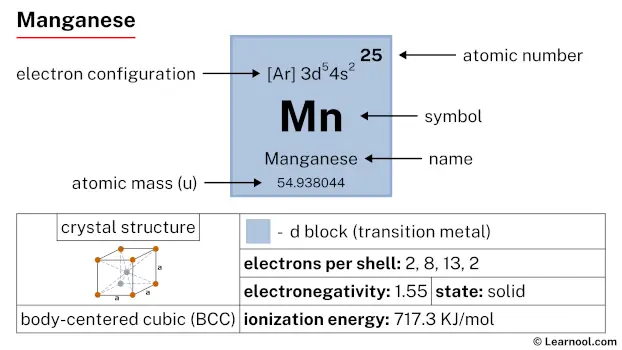
Manganese (Mn) is a chemical element of the periodic table, located in the group 7 and the period 4, and has the atomic number 25. It is a hard, silvery-grey transition metal, whose name comes from the Latin word “magnes”, which means magnet. It is the twelfth most abundant element on earth.
On periodic table
| group | ⇨ | 1 | 2 | 3 | 4 | 5 | 6 | 7 | 8 | 9 | 10 | 11 | 12 | 13 | 14 | 15 | 16 | 17 | 18 |
| period | ⇩ | ||||||||||||||||||
| 1 | 1 H 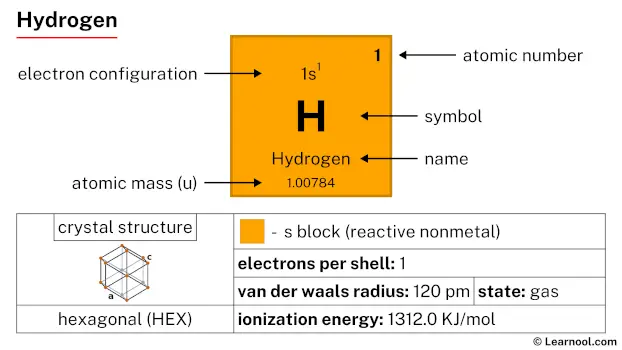 Hydrogen |
2 He  Helium |
|||||||||||||||||
| 2 | 3 Li  Lithium |
4 Be 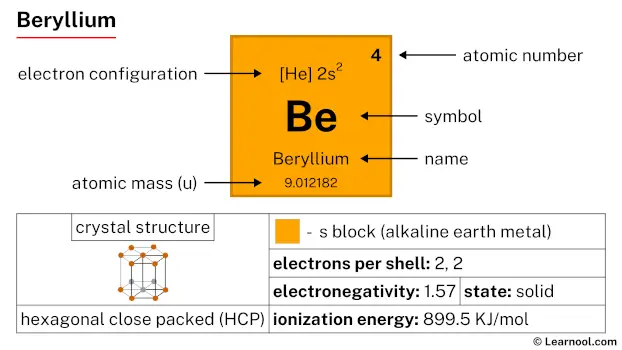 Beryllium |
5 B 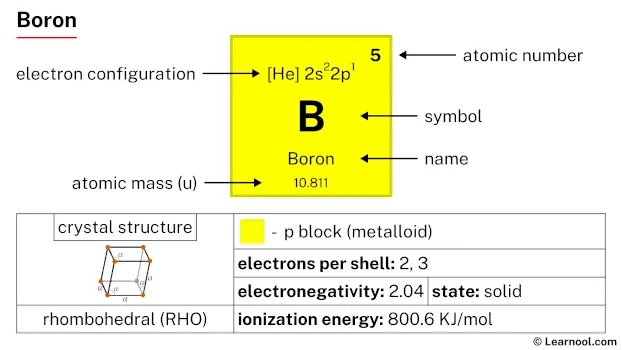 Boron |
6 C  Carbon |
7 N 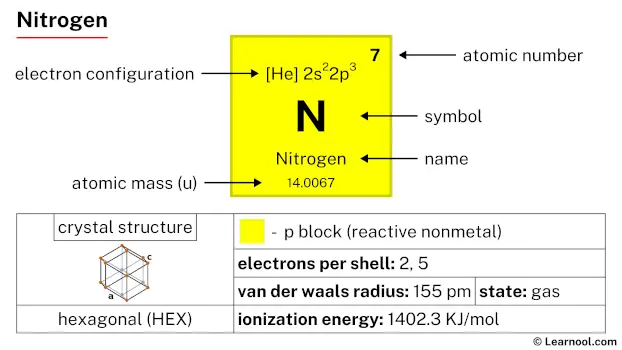 Nitrogen |
8 O 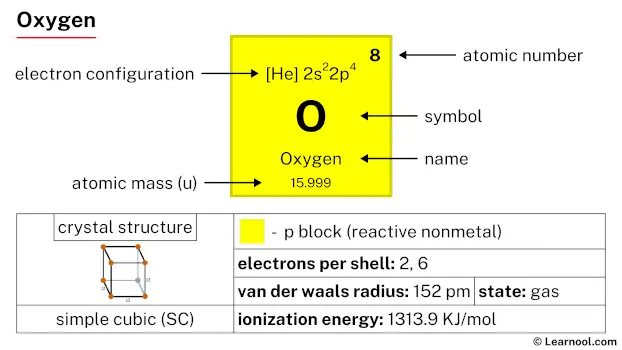 Oxygen |
9 F 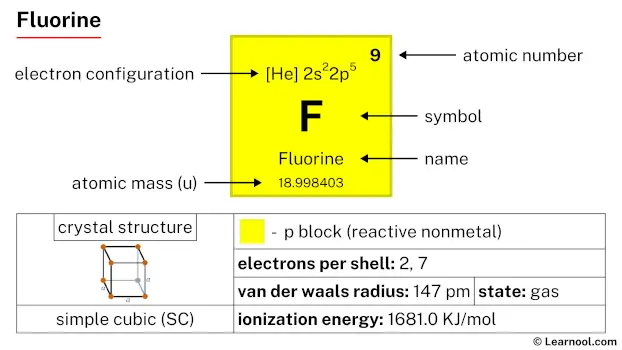 Fluorine |
10 Ne 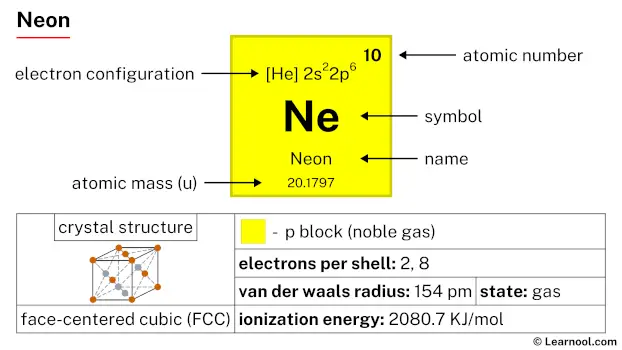 Neon |
|||||||||||
| 3 | 11 Na 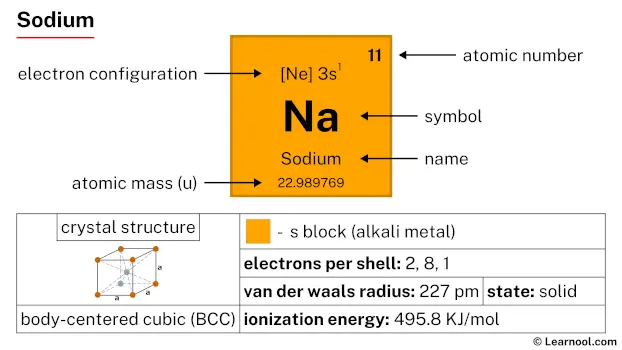 Sodium |
12 Mg 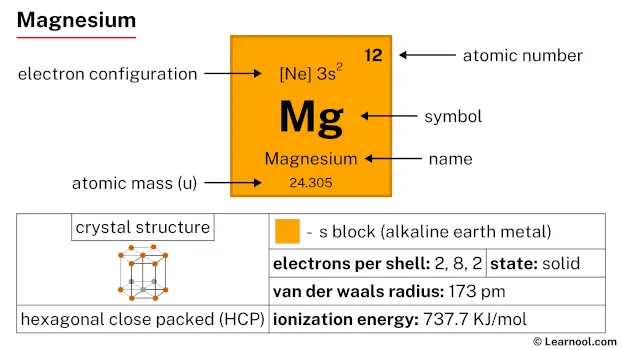 Magnesium |
13 Al  Aluminium |
14 Si Silicon |
15 P 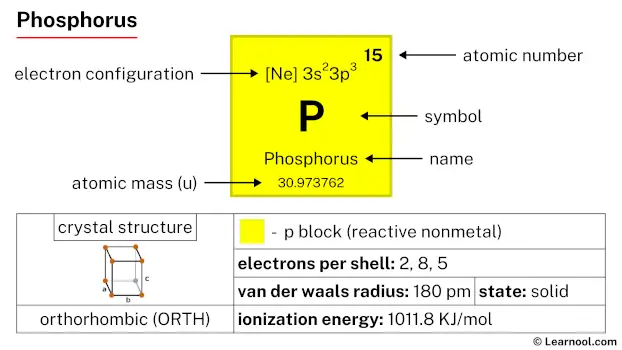 Phosphorus |
16 S 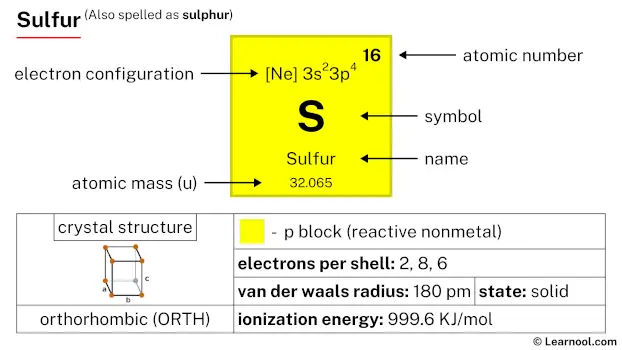 Sulfur |
17 Cl 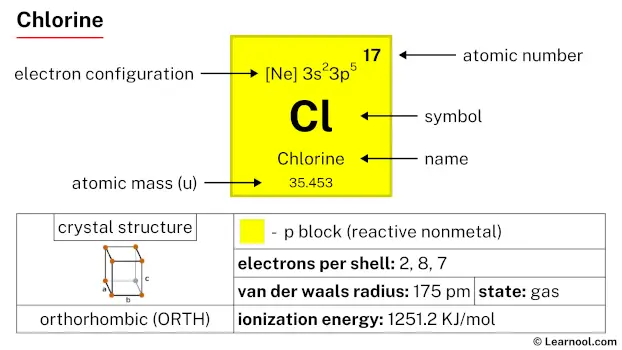 Chlorine |
18 Ar 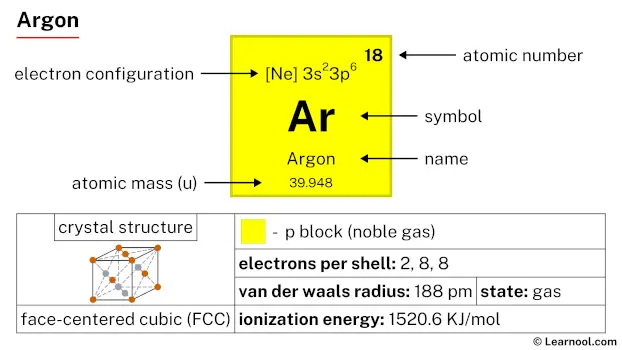 Argon |
|||||||||||
| 4 | 19 K 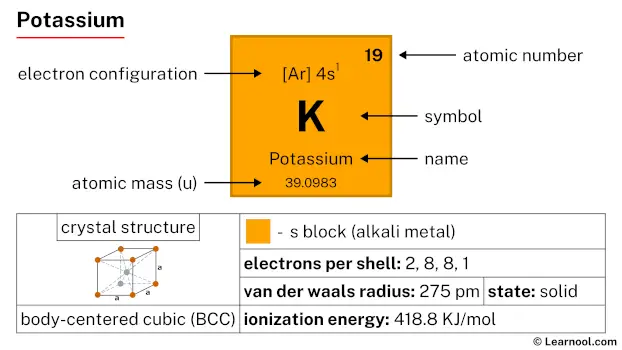 Potassium |
20 Ca 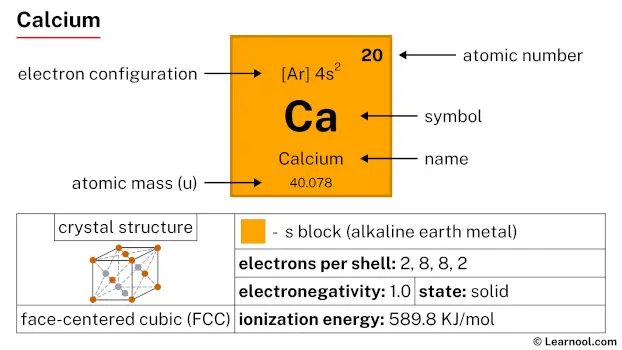 Calcium |
21 Sc 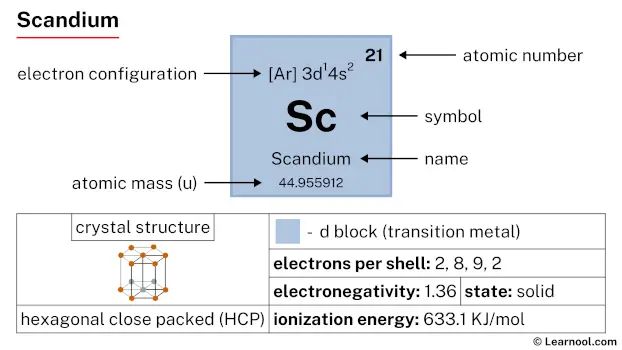 Scandium |
22 Ti 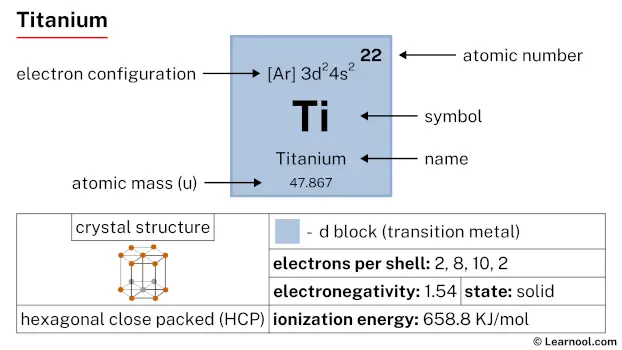 Titanium |
23 V 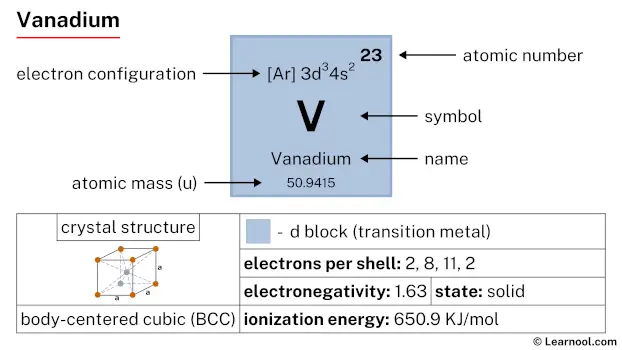 Vanadium |
24 Cr 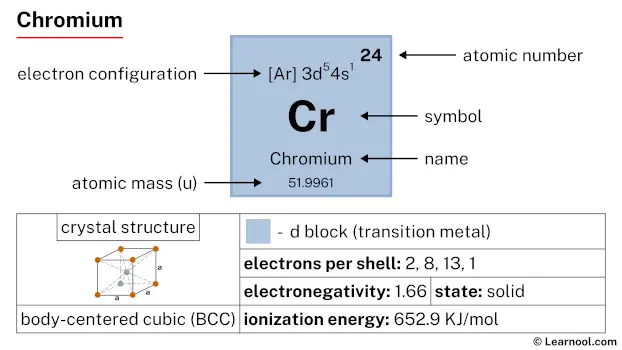 Chromium |
25 Mn Manganese |
26 Fe 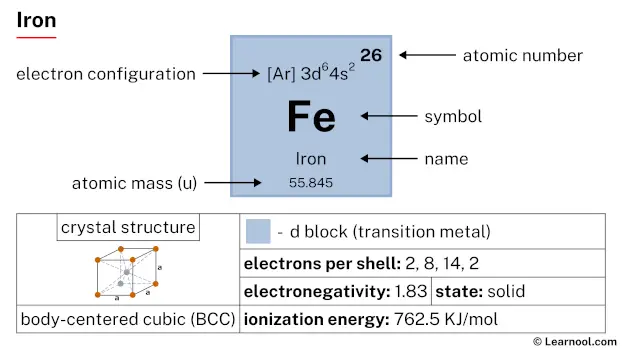 Iron |
27 Co 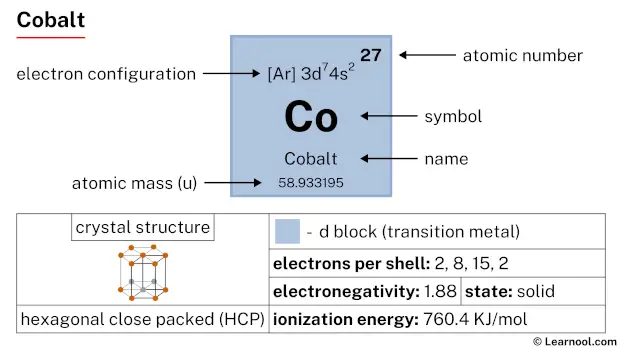 Cobalt |
28 Ni 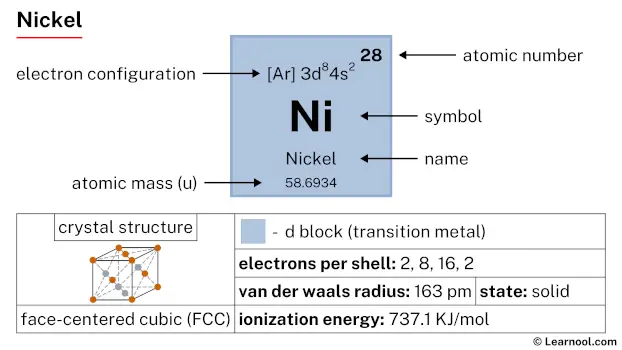 Nickel |
29 Cu 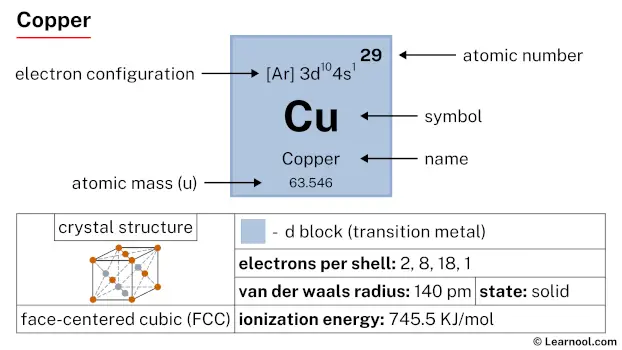 Copper |
30 Zn  Zinc |
31 Ga 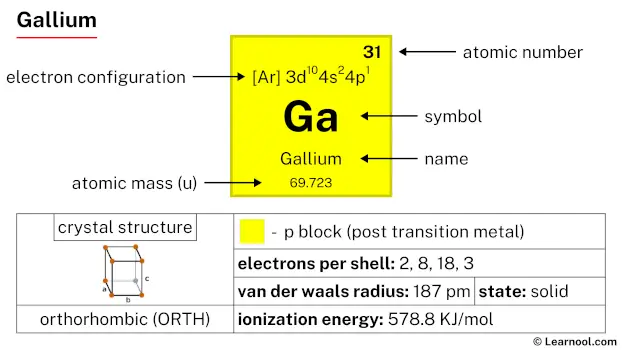 Gallium |
32 Ge 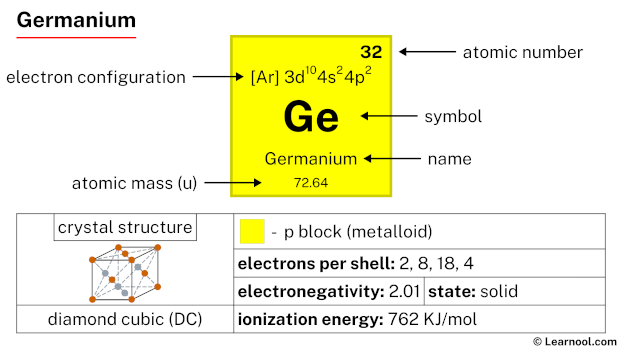 Germanium |
33 As 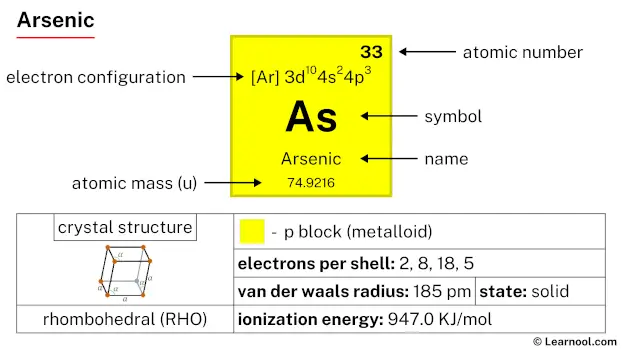 Arsenic |
34 Se 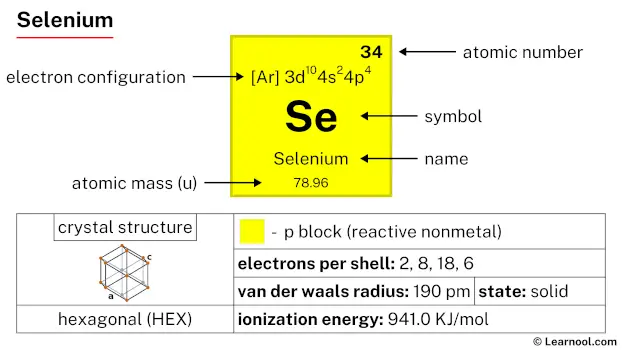 Selenium |
35 Br 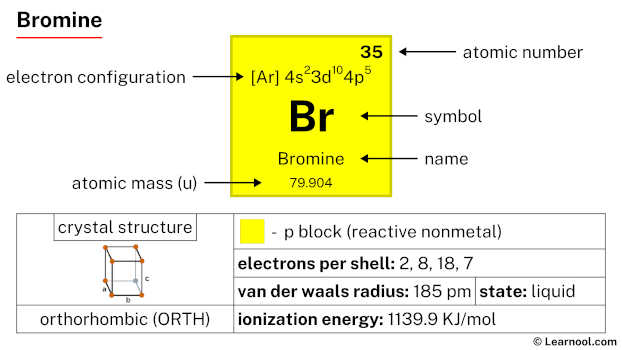 Bromine |
36 Kr  Krypton |
|
| 5 | 37 Rb 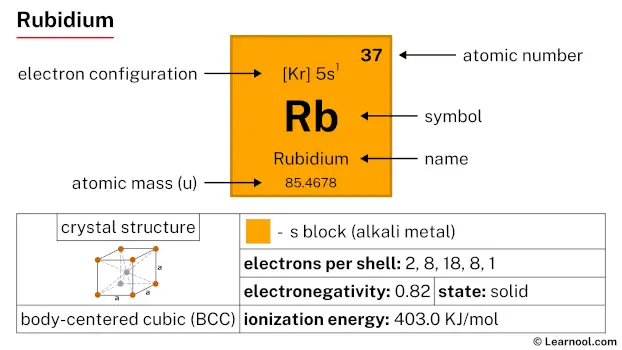 Rubidium |
38 Sr 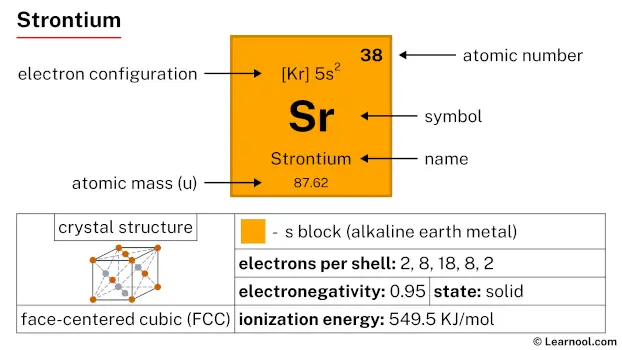 Strontium |
39 Y 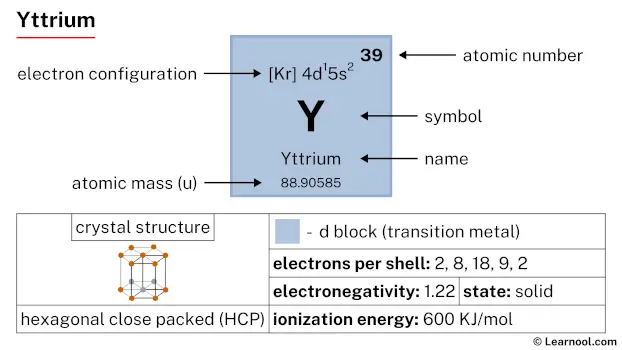 Yttrium |
40 Zr 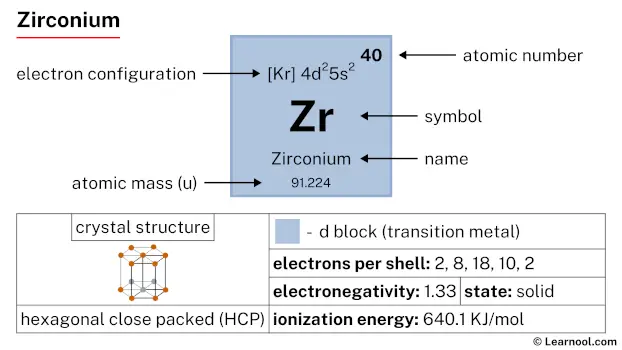 Zirconium |
41 Nb 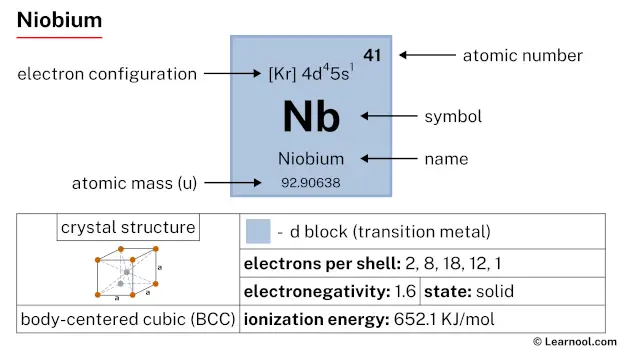 Niobium |
42 Mo 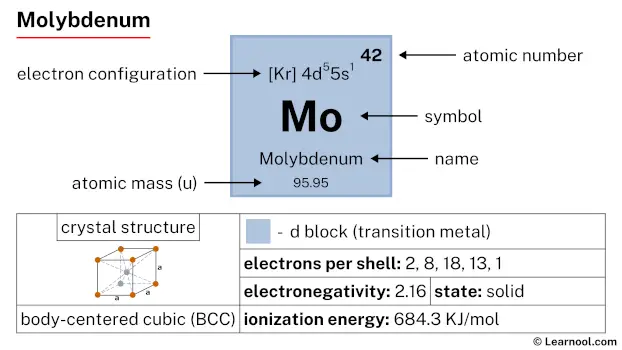 Molybdenum |
43 Tc 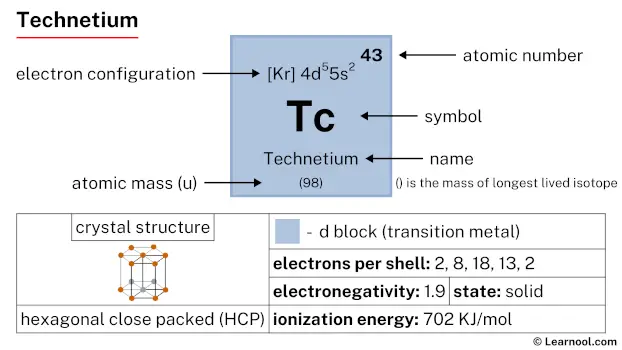 Technetium |
44 Ru 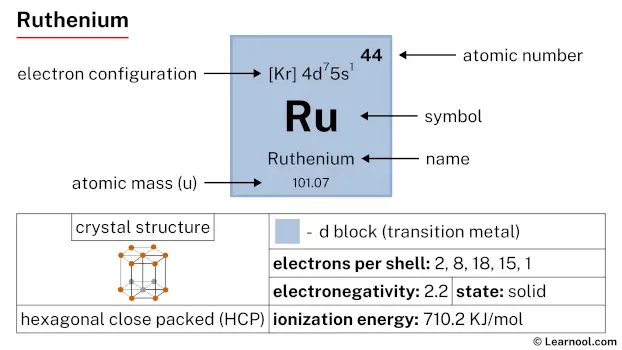 Ruthenium |
45 Rh 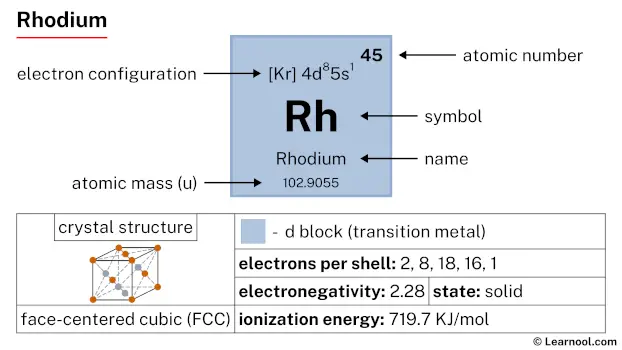 Rhodium |
46 Pd  Palladium |
47 Ag  Silver |
48 Cd 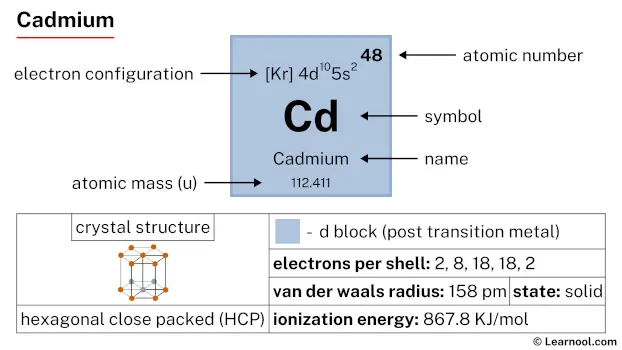 Cadmium |
49 In 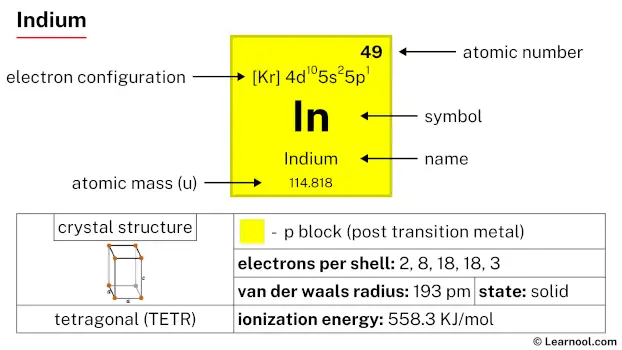 Indium |
50 Sn 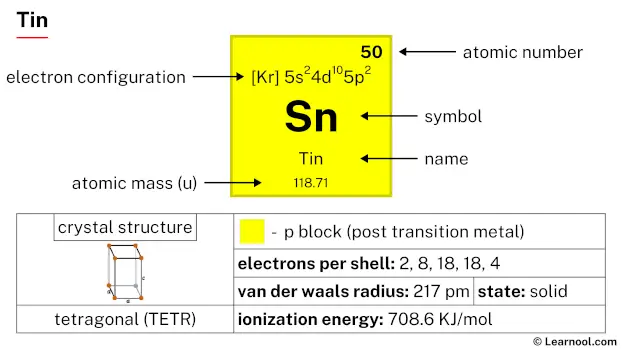 Tin |
51 Sb 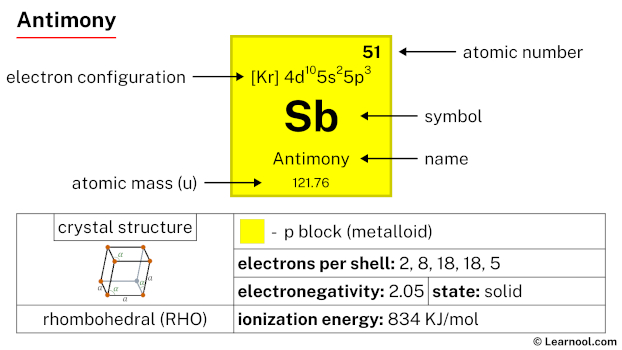 Antimony |
52 Te 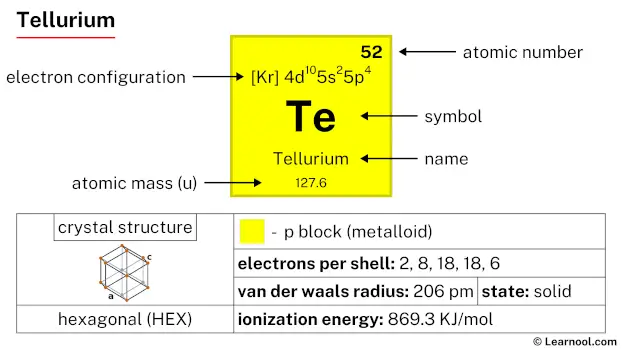 Tellurium |
53 I 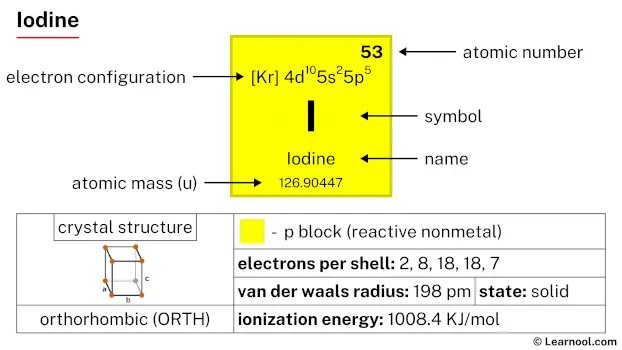 Iodine |
54 Xe 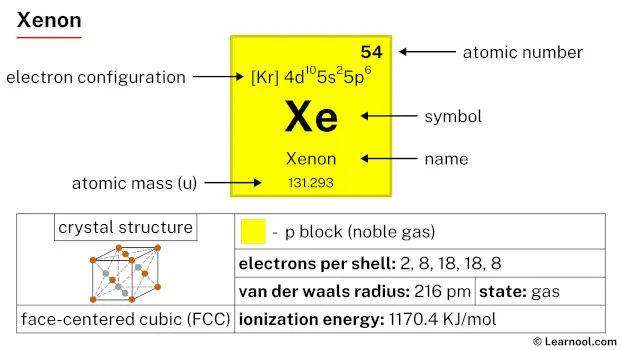 Xenon |
|
| 6 | 55 Cs 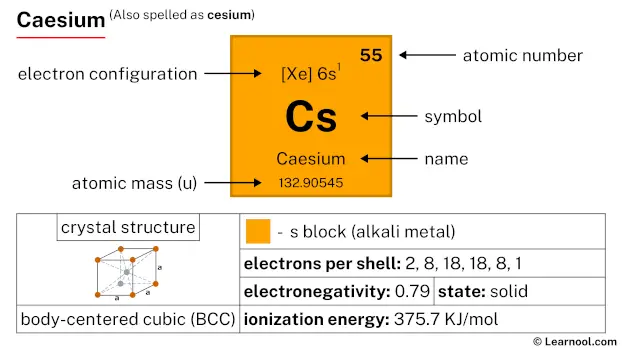 Caesium |
56 Ba 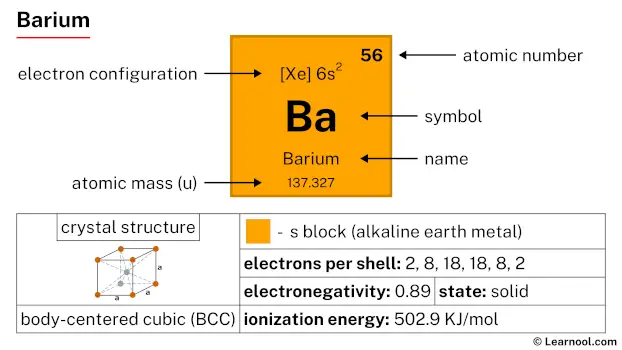 Barium |
72 Hf 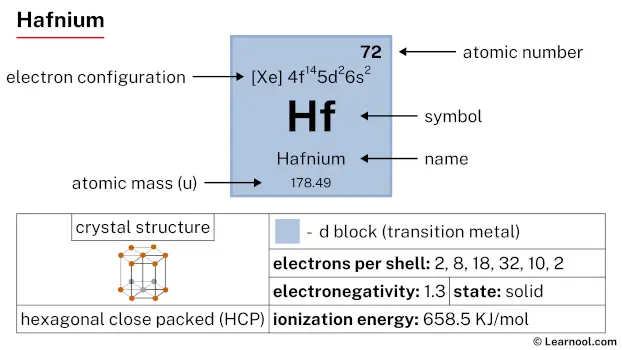 Hafnium |
73 Ta 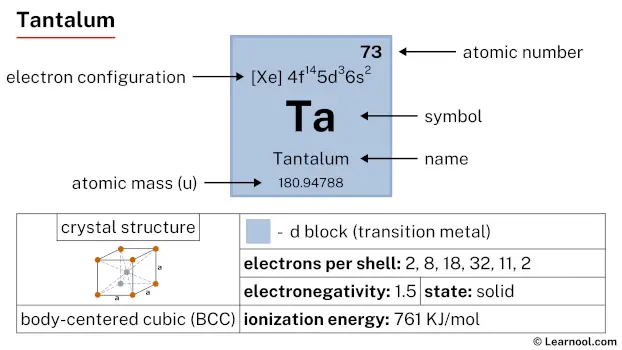 Tantalum |
74 W 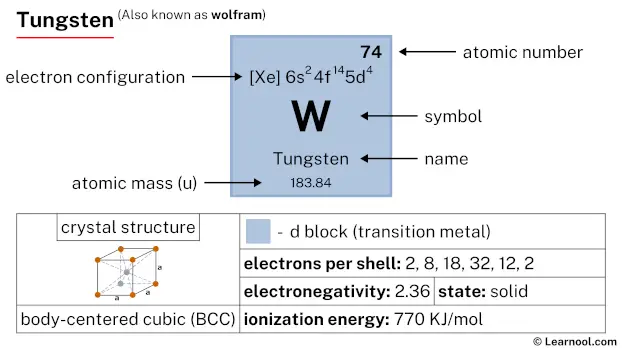 Tungsten |
75 Re 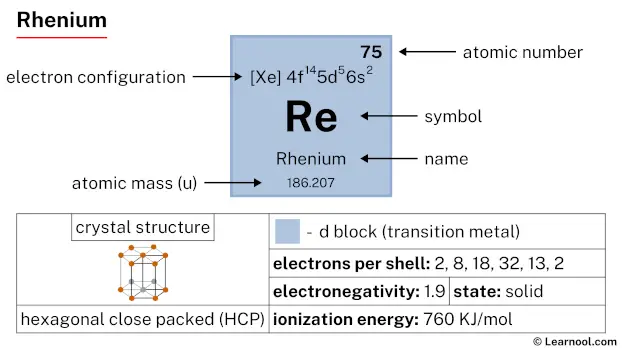 Rhenium |
76 Os 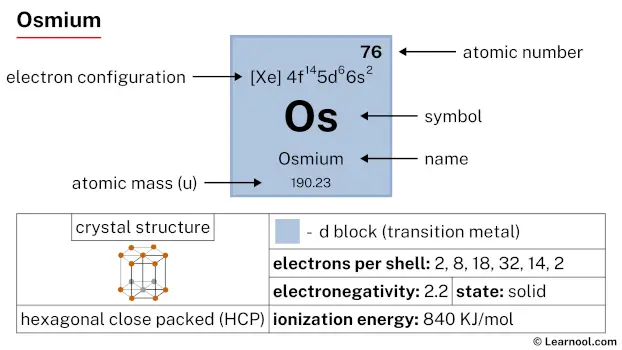 Osmium |
77 Ir 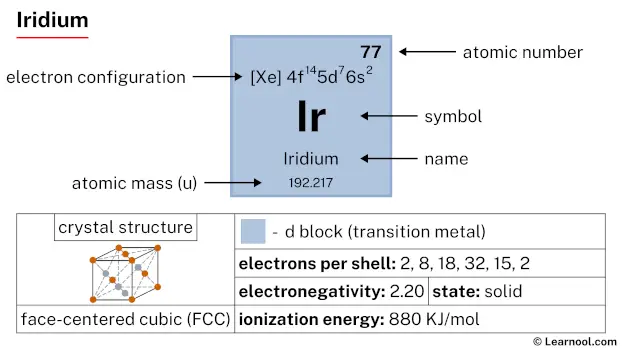 Iridium |
78 Pt  Platinum |
79 Au  Gold |
80 Hg 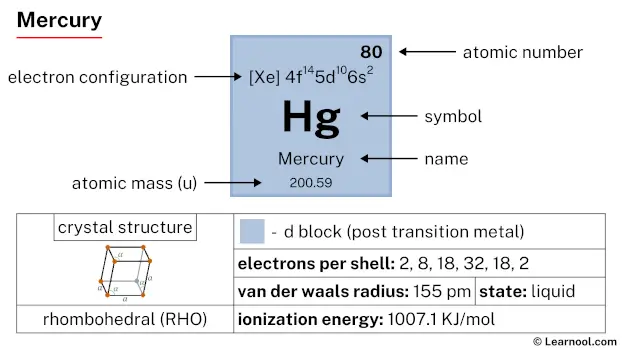 Mercury |
81 Tl 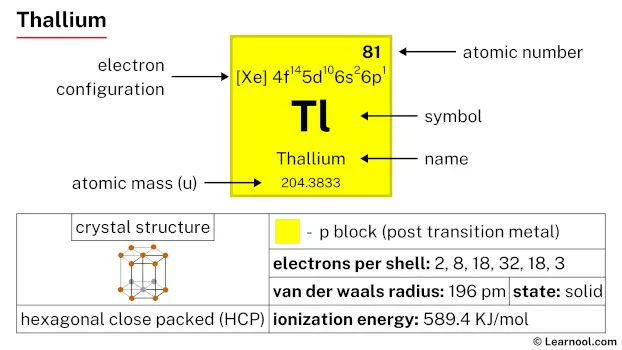 Thallium |
82 Pb  Lead |
83 Bi 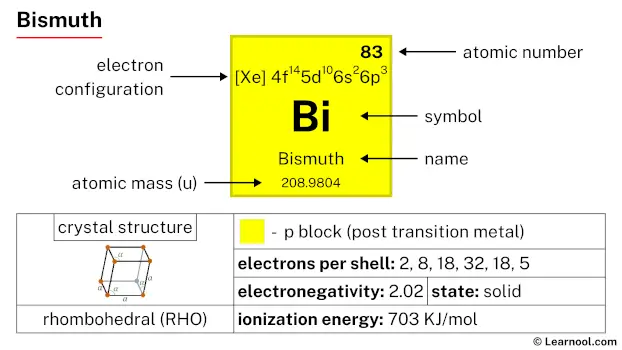 Bismuth |
84 Po 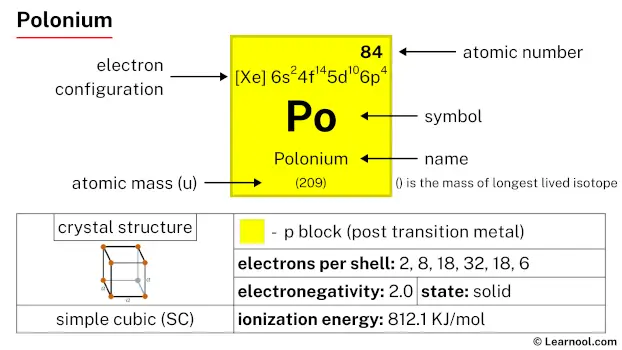 Polonium |
85 At 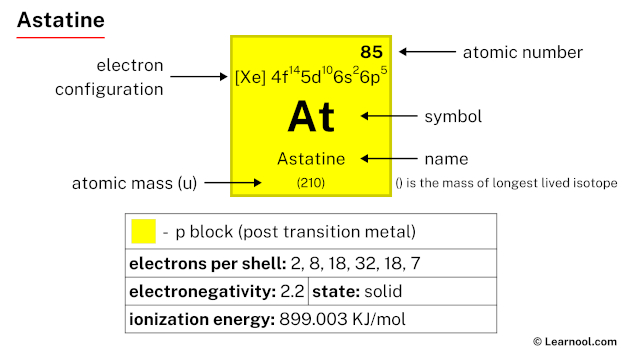 Astatine |
86 Rn 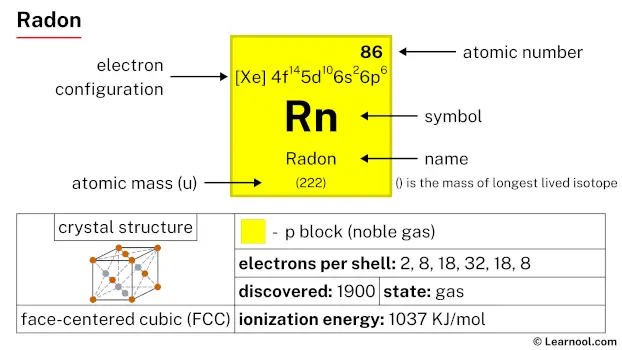 Radon |
||
| 7 | 87 Fr 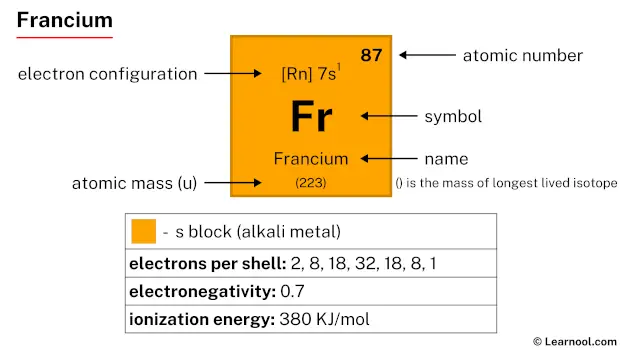 Francium |
88 Ra 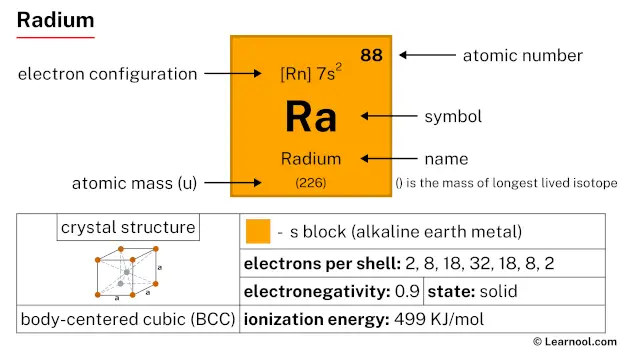 Radium |
104 Rf 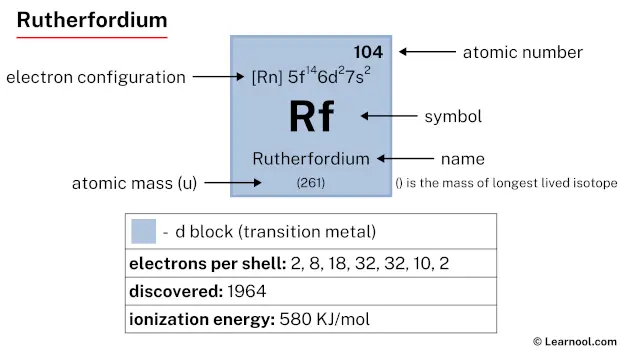 Rutherfordium |
105 Db 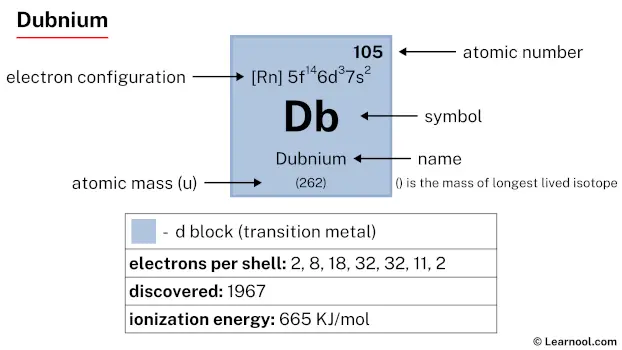 Dubnium |
106 Sg 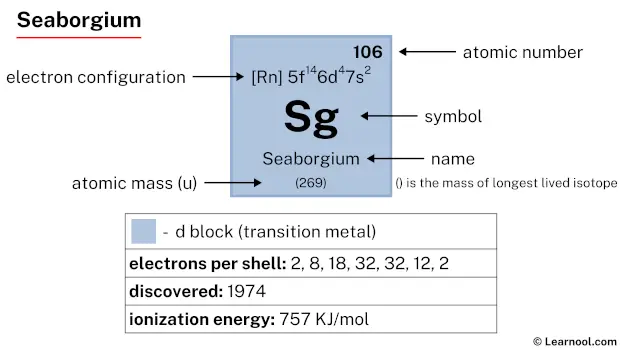 Seaborgium |
107 Bh 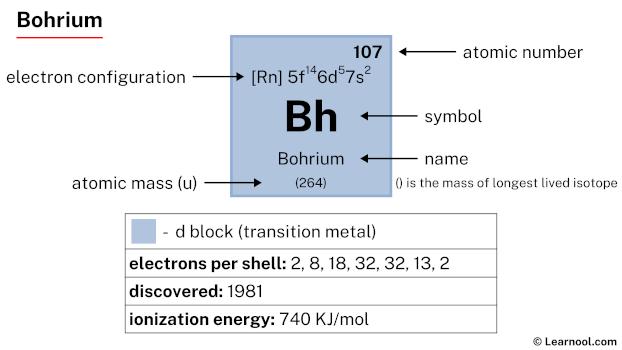 Bohrium |
108 Hs 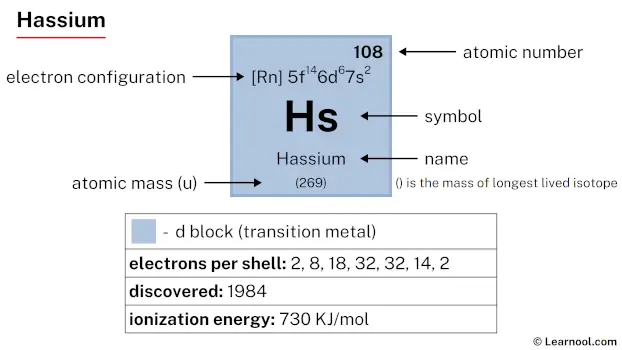 Hassium |
109 Mt 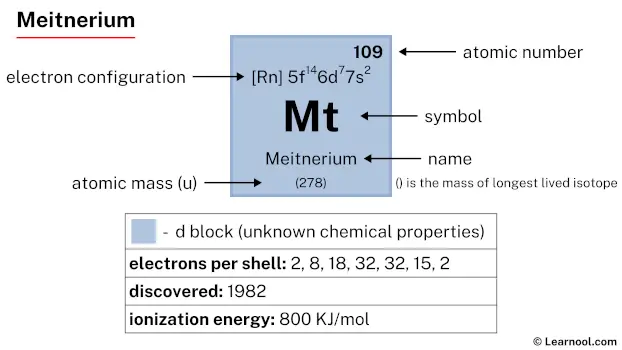 Meitnerium |
110 Ds 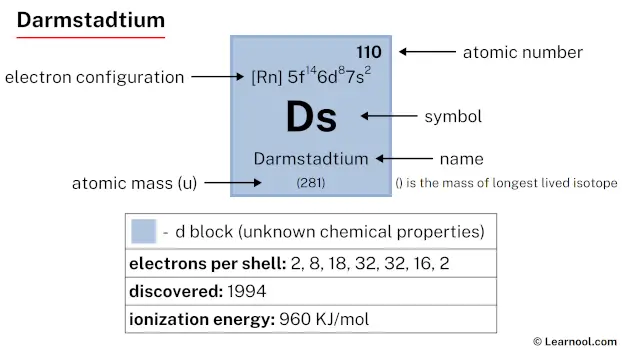 Darmstadtium |
111 Rg 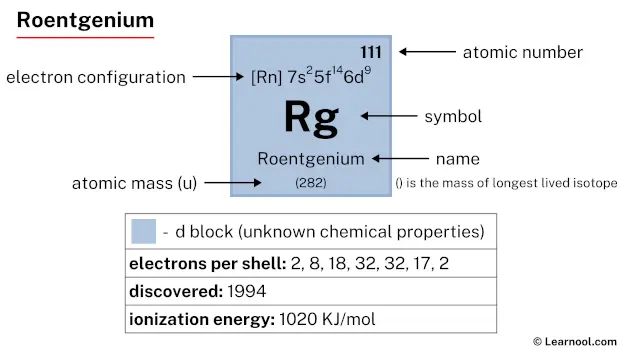 Roentgenium |
112 Cn  Copernicium |
113 Nh 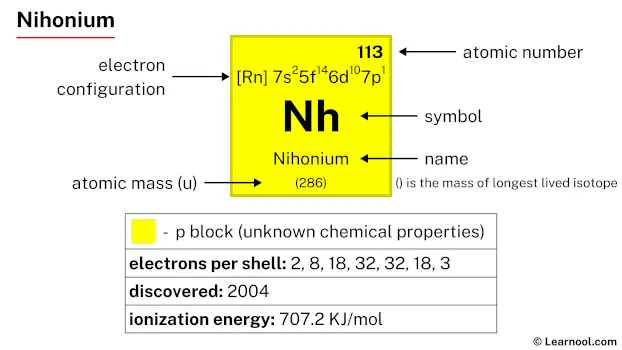 Nihonium |
114 Fl 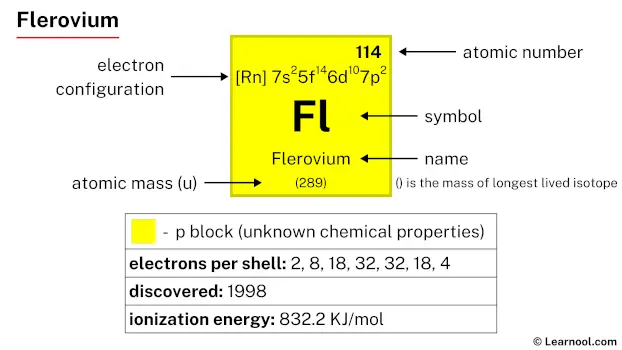 Flerovium |
115 Mc 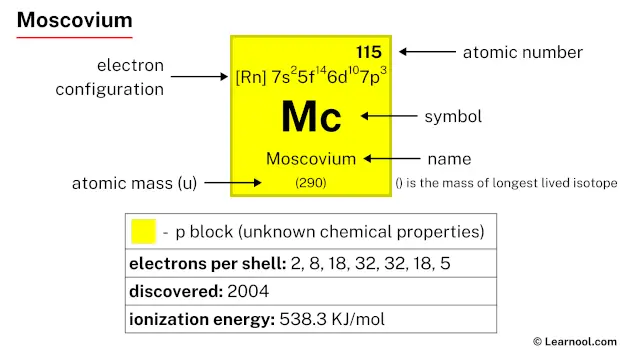 Moscovium |
116 Lv 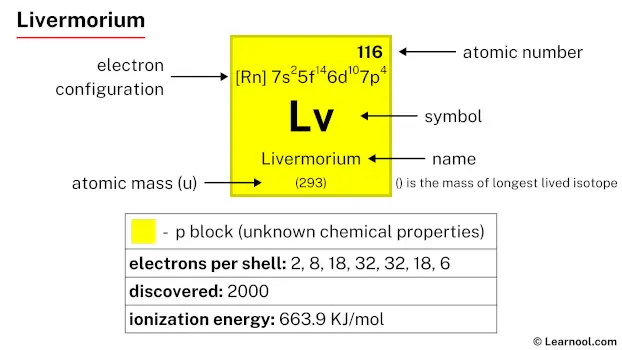 Livermorium |
117 Ts 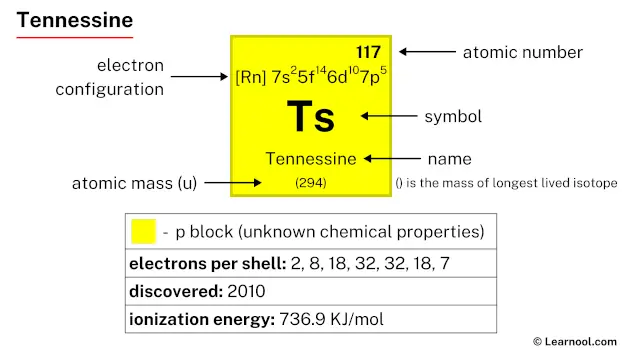 Tennessine |
118 Og 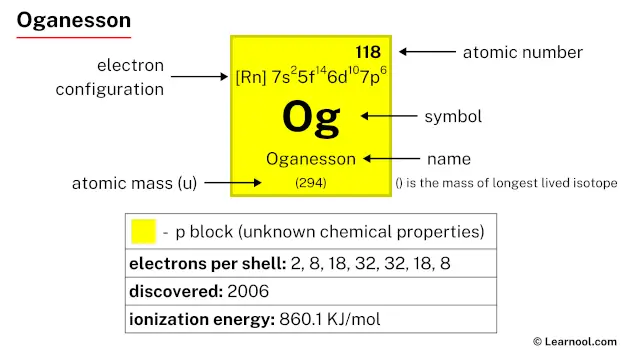 Oganesson |
||
| 57 La 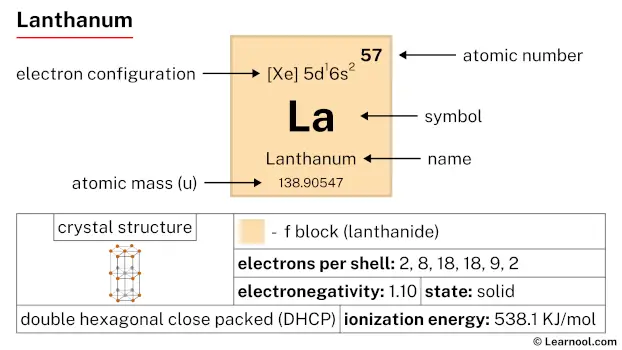 Lanthanum |
58 Ce 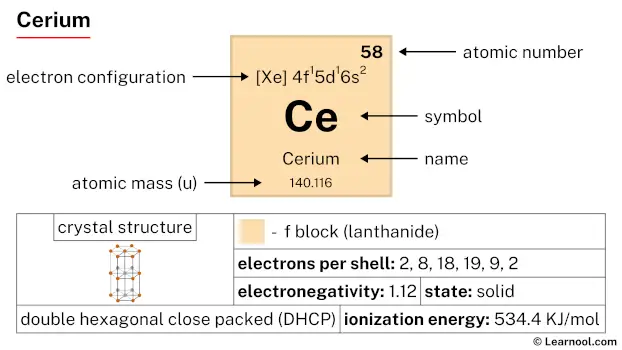 Cerium |
59 Pr 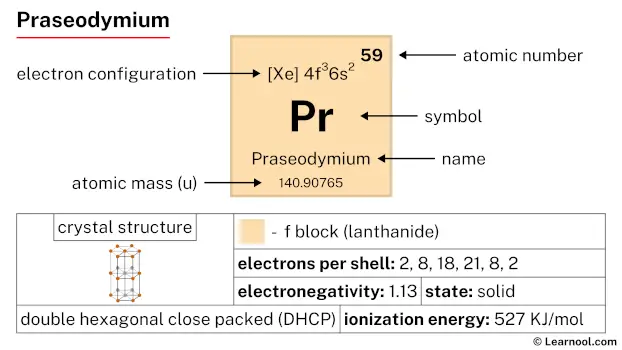 Praseodymium |
60 Nd 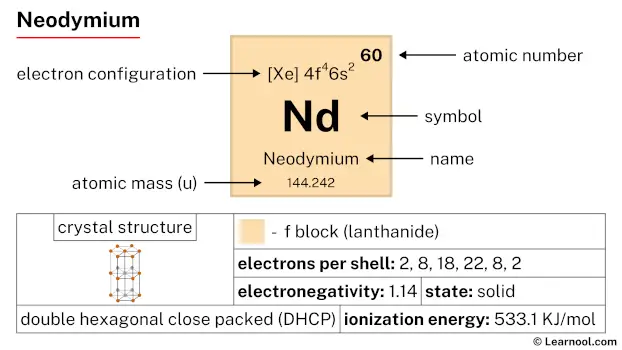 Neodymium |
61 Pm 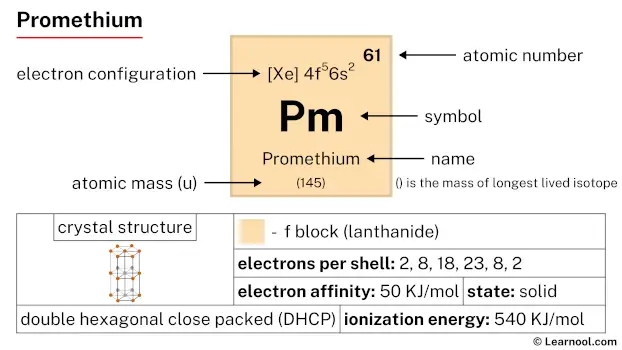 Promethium |
62 Sm 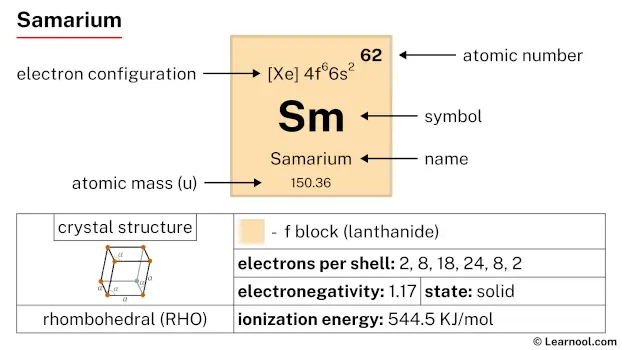 Samarium |
63 Eu 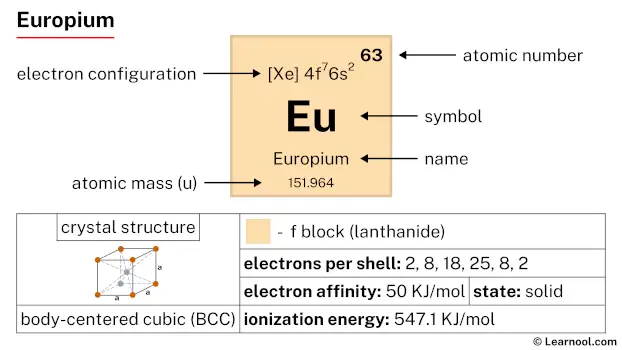 Europium |
64 Gd 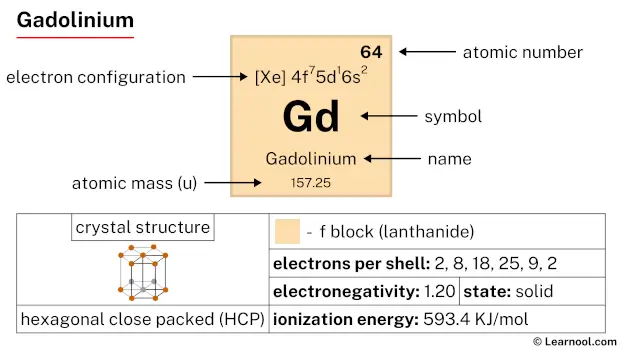 Gadolinium |
65 Tb 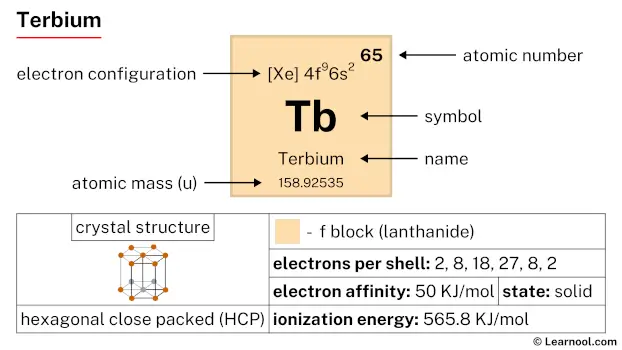 Terbium |
66 Dy 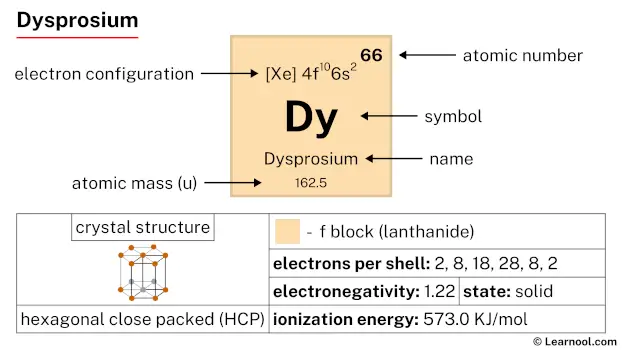 Dysprosium |
67 Ho 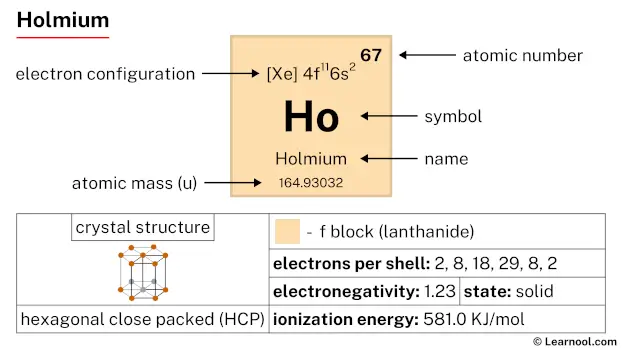 Holmium |
68 Er 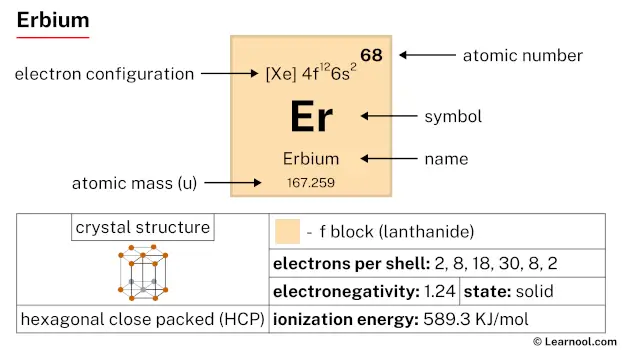 Erbium |
69 Tm 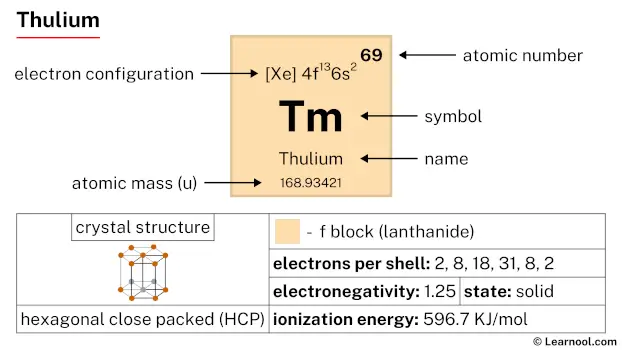 Thulium |
70 Yb 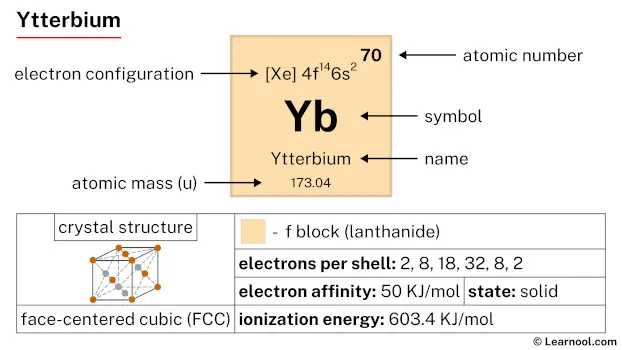 Ytterbium |
71 Lu 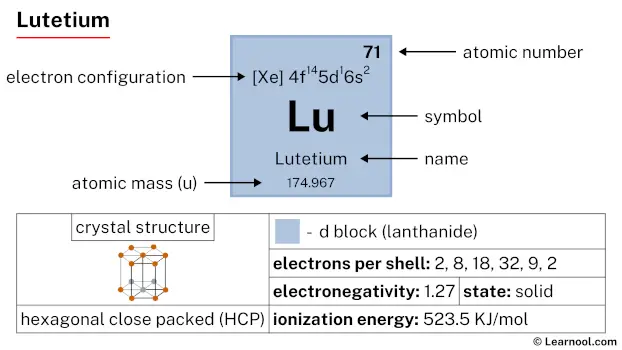 Lutetium |
|||||
| 89 Ac 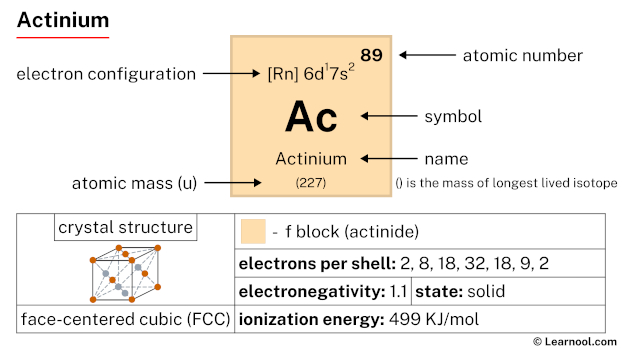 Actinium |
90 Th 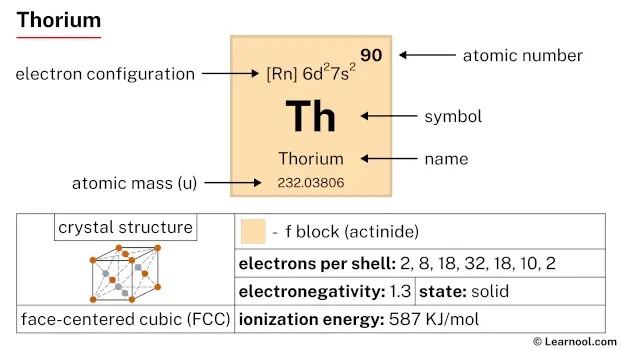 Thorium |
91 Pa 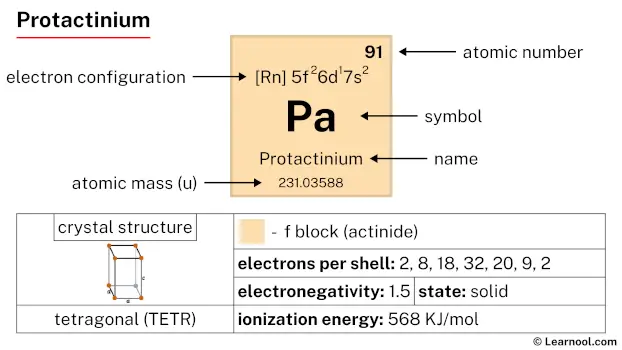 Protactinium |
92 U 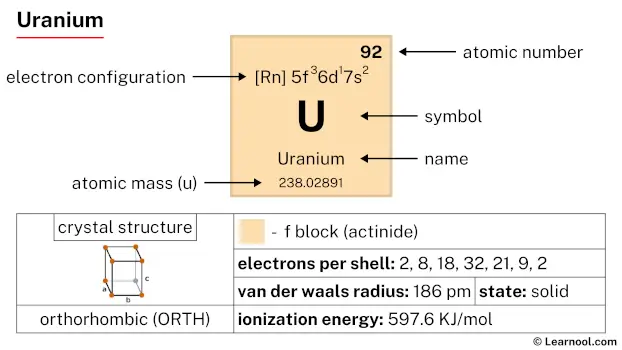 Uranium |
93 Np 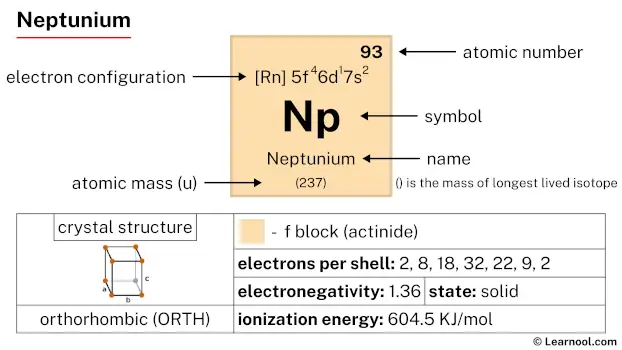 Neptunium |
94 Pu 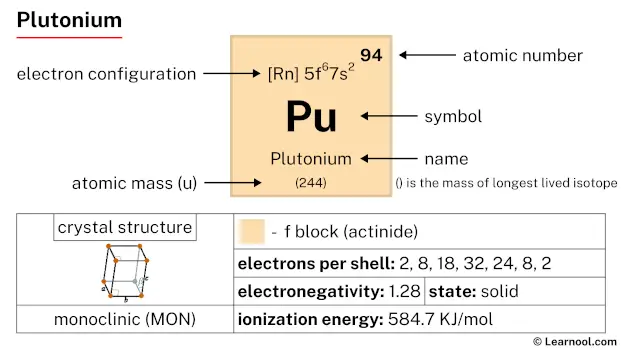 Plutonium |
95 Am  Americium |
96 Cm 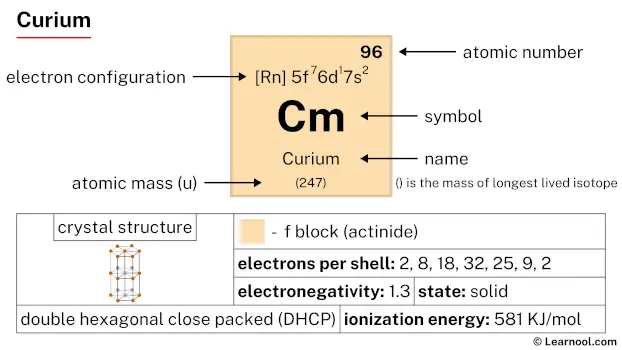 Curium |
97 Bk 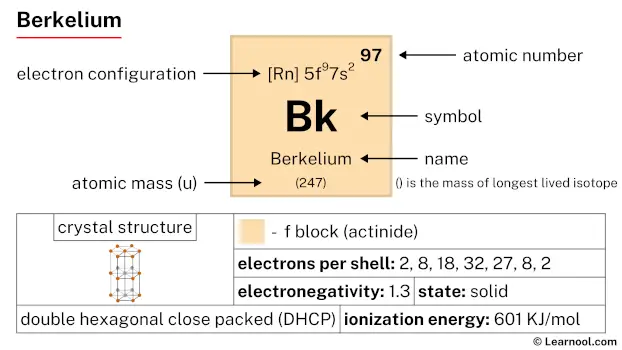 Berkelium |
98 Cf 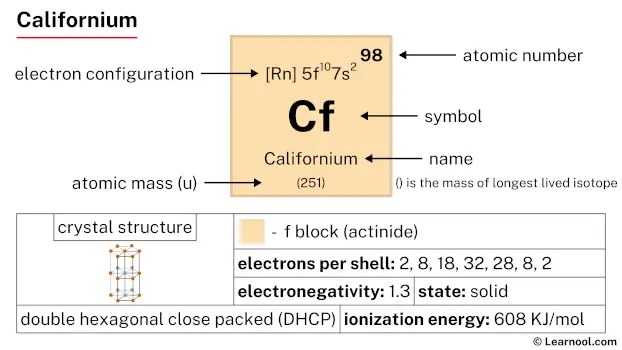 Californium |
99 Es 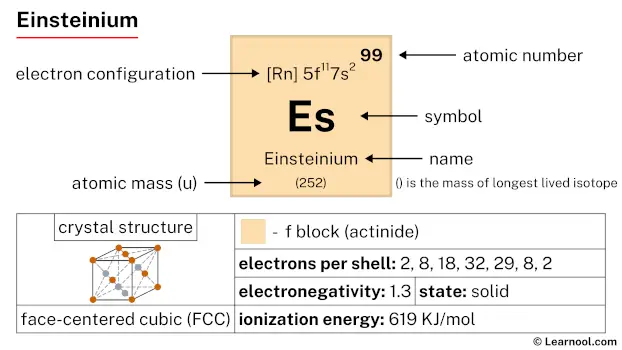 Einsteinium |
100 Fm 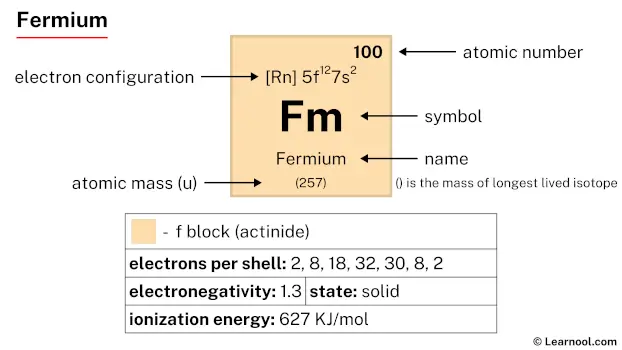 Fermium |
101 Md 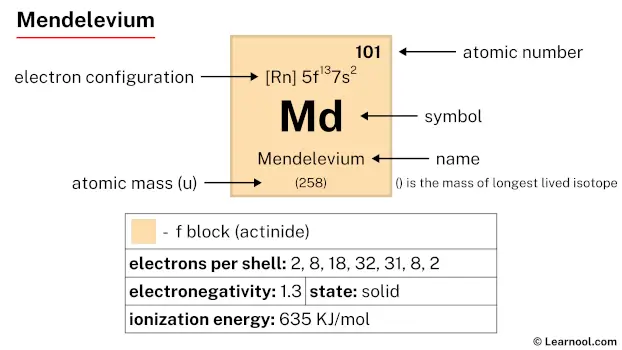 Mendelevium |
102 No 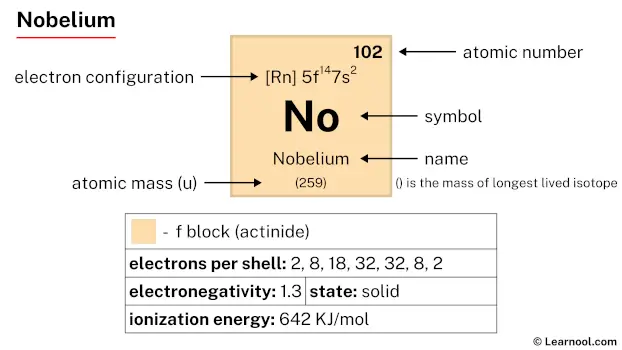 Nobelium |
103 Lr 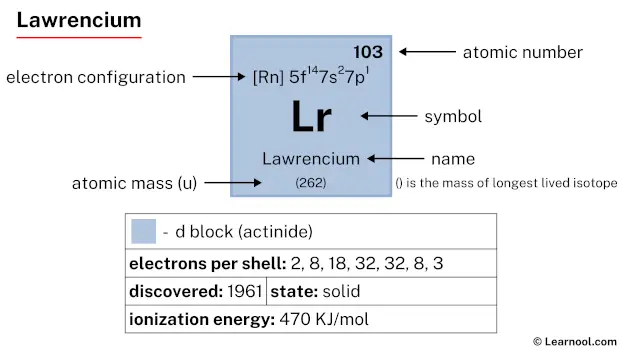 Lawrencium |
|||||
| – d block |
Manganese is a d-block element, found in the seventh column and the fourth row of the periodic table. It has the atomic number 25 and is denoted by the symbol Mn.
Element information
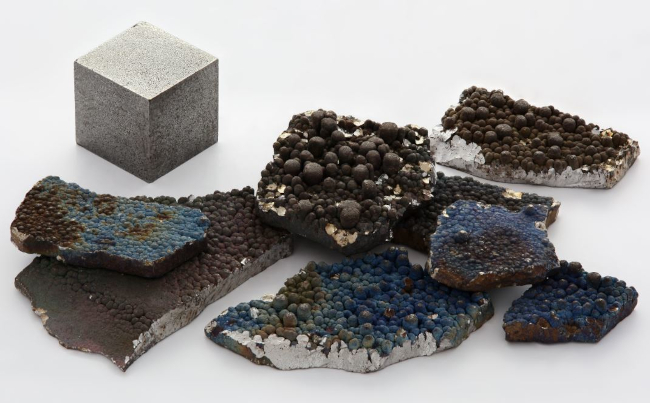 |
|
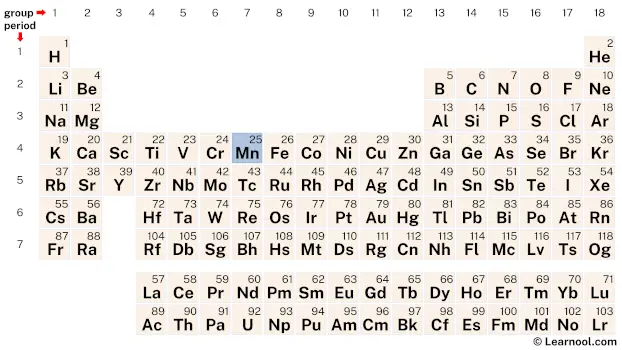 |
|
| Origin of name | Latin word “magnes” (which means magnet) |
| Symbol | Mn |
| Atomic number (Z) | 25 |
| Atomic mass | 54.938044 u |
| Block | d-block |
| Group | 7 |
| Period | 4 |
| Classification | Transition metal |
| Atomic radius | 127 pm |
| Covalent radius | Low spin: 139±5 pm High spin: 161±8 pm |
| Melting point | 1246 ℃, 2275 ℉, 1519 K |
| Boiling point | 2061 ℃, 3742 ℉, 2334 K |
| Electron configuration | [Ar] 3d5 4s2 |
| Electrons per shell | 2, 8, 13, 2 |
| Learn how to draw: Manganese Bohr model | |
| Crystal structure | Body-centered cubic (bcc) |
| Phase at r.t | Solid |
| Density near r.t | 7.21 g/cm3 |
| Main isotopes | Manganese-55 |
| Natural occurrence | Primordial |
| Oxidation state | +2, +3, +4, +6, +7 |
| Electronegativity (Pauling scale) | 1.55 |
| Protons Neutrons Electrons |
25 30 25 |
| Learn how to find: Manganese protons neutrons electrons | |
| CAS number | 7439-96-5 |
| Discovered by | Carl Wilhelm Scheele in 1774 |
History
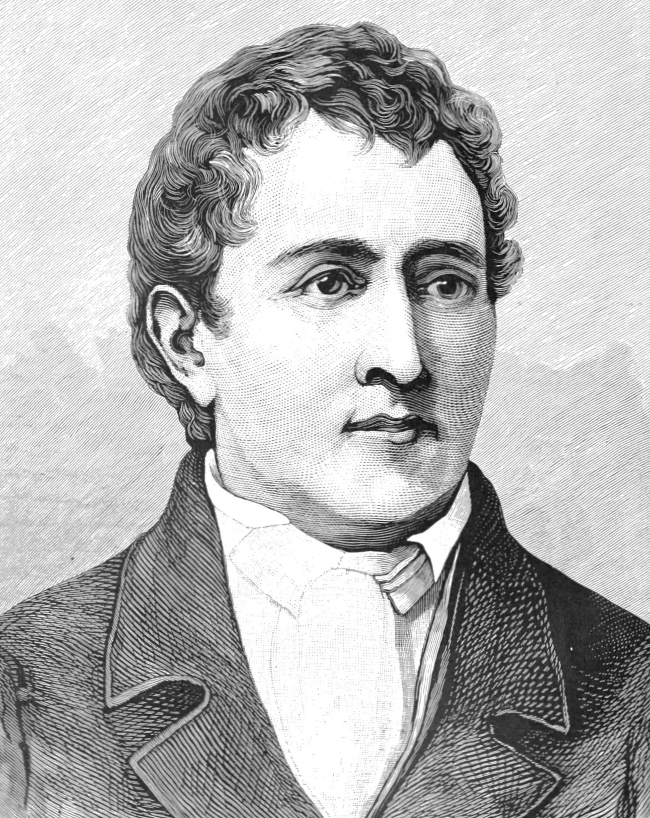
Manganese has been known since ancient times, although the element itself was not recognized until the 18th century. The black pigment pyrolusite, which is primarily composed of manganese dioxide, was used in prehistoric cave paintings, indicating that humans were using manganese compounds thousands of years ago. In the 17th century, manganese oxide was used to decolorize glass, and in the 18th century, Swedish chemist Carl Wilhelm Scheele discovered that the mineral pyrolusite was made up of a new element, which he named “manganese” after the Latin word for magnet, magnes. Later, another Swedish chemist, Johan Gottlieb Gahn, isolated pure manganese metal in 1774 by reducing manganese dioxide with carbon. Since then, manganese has become an important industrial metal, used in a wide range of applications.
Occurrence
Manganese is a naturally occurring element that is found in many minerals and ores. It is the twelfth most abundant element in the Earth’s crust and is widely distributed throughout the world. Manganese is typically found in combination with iron and other elements in rocks and soil. It is also present in seawater and freshwater.
Some of the most common manganese-containing minerals include pyrolusite, rhodochrosite, and braunite. Pyrolusite is the most important ore of manganese, and it is typically found in massive or granular forms. Rhodochrosite is a pink to reddish-brown mineral that is often used as a decorative stone. Braunite is a black mineral that is often found with other manganese minerals.
Production
Manganese is primarily produced from the mineral pyrolusite, which is found in abundance in many parts of the world, including South Africa, Gabon, Australia, and Brazil. The process of extracting manganese from pyrolusite involves a combination of roasting, leaching, and electrolysis.
The first step in the process is to roast the pyrolusite in the presence of air or oxygen. This converts the manganese dioxide (MnO2) in the pyrolusite to manganese oxide (MnO), which is a more reactive form of the element. The next step is to leach the manganese oxide with sulfuric acid, which converts it into manganese sulfate (MnSO4).
The final step in the process is electrolysis, which involves passing an electric current through a solution of manganese sulfate. This causes the manganese to deposit on the cathode, which can then be collected and refined into pure manganese metal.
In addition to the production of pure manganese metal, manganese is also used in the production of ferromanganese and silicomanganese alloys, which are used in the production of steel. These alloys contain varying amounts of manganese, iron, and silicon, and are used to impart specific properties to the steel, such as strength, hardness, and resistance to corrosion.
Properties
Manganese is a hard, silvery-gray metal that is solid at room temperature.
It has a melting point of 1246 ℃ and a boiling point of 2061 ℃.
It is a transition metal with an atomic number of 25 and symbol Mn.
Manganese has a high affinity for oxygen, forming various oxides in the presence of air.
It is a paramagnetic element, meaning that it is weakly attracted to a magnetic field.
It is a relatively active metal, reacting with a variety of acids and halogens.
Manganese has several stable isotopes, with the most abundant being 55Mn, followed by 53Mn, 54Mn, and 52Mn.
Manganese is a key component in many alloys, including stainless steel, aluminum, and copper alloys.
Manganese can exist in several oxidation states ranging from -3 to +7, with the most common being +2, +3, +4, +6, and +7.
Applications
Steel production
Manganese is a crucial element in the production of steel. It improves the strength, toughness, and workability of steel by acting as a deoxidizer and desulfurizer. Manganese also helps to prevent the formation of brittle iron sulfides in steel.
Batteries
Manganese is a key component in the production of lithium-ion batteries, which are used in electronic devices, electric vehicles, and renewable energy systems. Manganese oxide is used as a cathode material in these batteries, and its high specific energy allows for longer battery life.
Alloys
Manganese is used as an alloying agent in the production of various alloys, including aluminum alloys and copper alloys. Manganese improves the strength and durability of these alloys, making them more suitable for a range of applications.
Fertilizers
Manganese is an essential nutrient for plants, and it is often included in fertilizers to improve plant growth and development. Manganese helps to activate enzymes involved in photosynthesis and nitrogen metabolism.
Pigments
Manganese compounds are used as pigments in ceramics, paints, and other applications. Manganese dioxide is a black pigment that is used in the production of glass and ceramics, while manganese violet is a purple pigment used in paints and coatings.
Health supplements
Manganese is an essential nutrient for humans, and it is often included in multivitamin supplements. It is required for healthy bone development, and it also plays a role in the metabolism of carbohydrates, amino acids, and cholesterol.
Interesting facts
The name “manganese” comes from the Greek word “magnesia”, which refers to the region in Greece where the mineral magnetite was first found.
Manganese is the 12th most abundant element in the Earth’s crust.
Manganese is a key element in the production of steel, and its demand is closely linked to the steel industry.
Manganese is also used in the production of batteries, particularly rechargeable lithium-ion batteries used in electric vehicles.
Manganese compounds are used as pigments in paints and ceramics, as well as in fertilizers and animal feed.
Manganese is an essential nutrient for humans and animals, and plays a vital role in many biological processes such as metabolism and bone development.
Manganese deficiency can lead to health problems such as anemia, poor bone health, and impaired growth in children.
Manganese has been used since ancient times for coloring glass and pottery.
In its pure form, manganese is a silvery-gray metal that is quite brittle and can be easily oxidized.
Related
More elements
External links
- https://en.wikipedia.org/wiki/Manganese
- https://www.rsc.org/periodic-table/element/25/manganese
- https://www.britannica.com/science/manganese
- https://pubchem.ncbi.nlm.nih.gov/element/Manganese
- https://www.livescience.com/29247-manganese.html
- https://www.chemicool.com/elements/manganese.html
- https://www.ducksters.com/science/chemistry/manganese.php
Deep
Learnool.com was founded by Deep Rana, who is a mechanical engineer by profession and a blogger by passion. He has a good conceptual knowledge on different educational topics and he provides the same on this website. He loves to learn something new everyday and believes that the best utilization of free time is developing a new skill.
